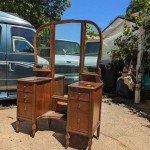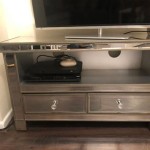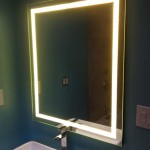How To Hang A Mirror On The Wall Without Hooks
Hanging a mirror securely without traditional hooks offers a range of benefits, from avoiding wall damage to providing more flexibility in placement. Several effective methods cater to different mirror sizes, wall types, and aesthetic preferences. Choosing the right method depends on a thorough assessment of these factors.
Adhesive Strips for Lighter Mirrors
Adhesive strips designed specifically for hanging pictures and mirrors provide a convenient and damage-free solution for lighter mirrors. These strips utilize a strong adhesive that bonds with the wall surface and the back of the mirror. Weight limits vary by brand and product, so it's crucial to choose strips that can comfortably support the mirror's weight. Before application, ensure both the wall and the mirror back are clean and dry. Follow the manufacturer's instructions precisely for optimal adhesion and longevity.
When using adhesive strips, consider the wall material. These strips adhere best to smooth, non-porous surfaces like painted drywall or glass. Textured walls, wallpaper, or brick surfaces may require a different hanging method. For added security, particularly with larger mirrors within the weight limit, consider using multiple strips spaced evenly across the back of the mirror.
Heavy-Duty Adhesive Tapes for Larger Mirrors
For larger or heavier mirrors exceeding the weight capacity of standard adhesive strips, heavy-duty adhesive tapes offer a robust alternative. These tapes, often double-sided and specifically formulated for mounting, provide significantly stronger bonding. As with adhesive strips, surface preparation is critical. Clean both the wall and the mirror back thoroughly to remove any dust, grease, or debris that could compromise adhesion.
When working with heavier mirrors, it’s advisable to apply the adhesive tape in vertical strips along the back of the mirror, rather than relying on a few small squares. This distributes the weight more evenly and creates a stronger bond with the wall. It’s essential to press the mirror firmly against the wall for the duration specified by the manufacturer to ensure proper adhesion. A level is recommended to guarantee straight and even placement before the adhesive sets.
Mirror Mounting Clips for Secure Placement
Mounting clips offer another effective solution for hanging mirrors without hooks, especially for larger or heavier pieces. These clips come in various designs, some attaching to the wall and gripping the bottom edge of the mirror, while others clamp the sides of the mirror. Mirror clips provide a higher level of security and stability. Ensure the clips chosen are appropriate for the mirror's thickness and weight.
Accurate measurements and careful marking are crucial when installing mirror clips. Use a level to ensure the clips are aligned horizontally, preventing the mirror from tilting. Some clips require drilling pilot holes into the wall, providing a more permanent mounting solution. Others might utilize adhesive backing for easier installation on suitable wall surfaces. Always follow the manufacturer’s instructions specific to the chosen clip style.
Utilizing a Cleat System for Extra Stability
A cleat system provides exceptional stability for heavier mirrors and is particularly well-suited for large, expensive, or antique pieces. This system utilizes two interlocking pieces: one attached to the wall and the other to the back of the mirror. The wall-mounted cleat typically consists of a horizontal piece with an angled lip. The mating cleat on the mirror fits snugly onto this lip, creating a secure interlock.
Installing a cleat system usually involves finding wall studs for secure anchoring, particularly for heavy mirrors. Accurate measurements and leveling are essential to ensure proper alignment between the two cleat pieces. This method offers a robust, concealed hanging solution that distributes the weight evenly and minimizes stress on the wall. Ensure the cleat system chosen is rated for the weight of the mirror being hung.
Decorative Molding as a Hanging Solution
For a more decorative approach, consider using molding or a narrow shelf to support the mirror. This method works well for smaller to medium-sized mirrors and adds a stylistic element to the overall presentation. The molding or shelf should be securely attached to the wall using appropriate fasteners, ensuring it can support the weight of the mirror. The mirror can then be leaned against the molding or shelf, creating a casual yet elegant display.
When using molding or a shelf for support, ensure the bottom edge of the mirror is stable and sits flush against the supporting structure. Non-slip pads placed between the mirror and the molding can help prevent slipping and protect both surfaces from scratches. This method also offers flexibility in positioning, allowing for easy adjustments and repositioning.

3 Simple Ways To Hang A Mirror On Wall Without Nails Wikihow

3 Simple Ways To Hang A Mirror On Wall Without Nails Wikihow

How To Hang A Hanging Mirror Without Accompanying Hardware

3 Simple Ways To Hang A Mirror On Wall Without Nails Wikihow
How To Hang A 100 Pound Mirror On Drywall Quora

3 Simple Ways To Hang A Mirror On Wall Without Nails Wikihow

How To Hang A Bathroom Mirror Without Nails S Or Drilling Velcro Brand
:strip_icc()/ScreenShot2022-04-28at1.12.19PM-e055476c70c6438585fa7c5cd531edcf.png?strip=all)
4 Easy Ways To Hang A Heavy Mirror

How To Install A Mirror Without Frame Merrypad

How To Hang A Frameless Mirror On Wall E Architect








